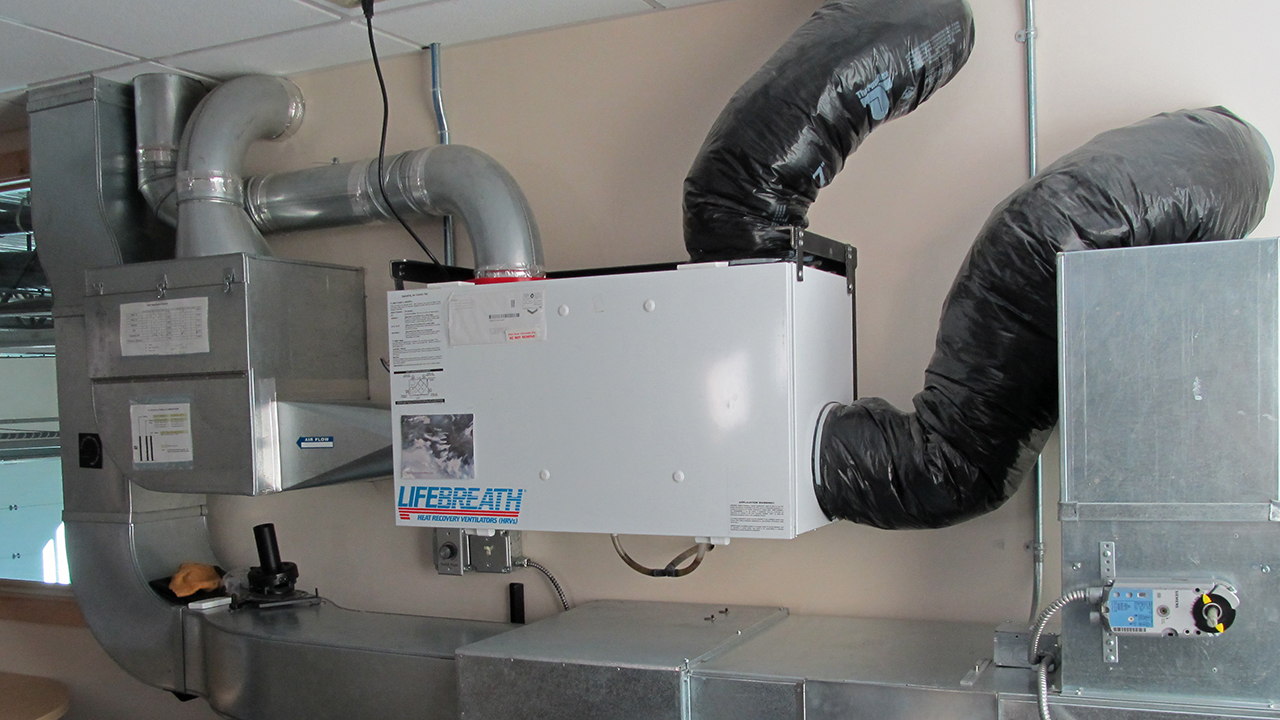The All-Inclusive Overview to the Uses of Heat Recovery Ventilation in Modern Structures
Heat Recovery Ventilation (HRV) systems stand for a significant innovation in developing technology (HRV Heat Recovery Ventilation). They offer an approach for trading stagnant interior air with fresh outside air while minimizing energy loss. This technique not just enhances indoor air top quality however also adds to energy performance in both property and industrial structures. Comprehending the various applications and benefits of HRV can reveal its essential function in modern-day layout and sustainability efforts. The effects of this innovation deserve exploring additionally
Comprehending Heat Recovery Ventilation Systems

Although several modern buildings prioritize power effectiveness, recognizing heat recuperation air flow (HRV) systems is vital for enhancing interior air top quality and lowering power intake. HRV systems work by transferring heat from stagnant interior air to inbound fresh air, successfully maintaining comfy indoor temperature levels while lessening power loss. These systems contain a heat exchanger, fans, and ductwork that facilitate the blood circulation of air. During wintertime, HRV systems capture and recycle warmth from the outbound air, while in summertime, they can help cool down inbound air. By continuously trading air, HRV systems additionally minimize humidity and the focus of interior contaminants. Correct installment and upkeep of HRV systems are necessary for their performance and effectiveness in enhancing total structure efficiency and convenience.
Benefits of Heat Recovery Ventilation
Heat recovery ventilation systems provide many advantages that enhance both power performance and interior air quality in contemporary buildings. By capturing and recycling energy from exhaust air, these systems greatly lower heating & cooling costs, leading to reduced power consumption. They keep a steady flow of fresh exterior air, decreasing the risk of interior air toxins and irritants. This continual exchange helps regulate humidity levels, avoiding mold and mildew development and making certain a much healthier living atmosphere. Additionally, HRV systems add to sustainability objectives by decreasing overall carbon footprints. Their capability to optimize air flow without compromising thermal convenience makes them a valuable addition to modern structure layout, promoting both financial and environmental advantages.
Applications of HRV in Residential Buildings
As house owners progressively focus on power efficiency and interior air top quality, the applications of warm healing ventilation (HRV) systems in domestic buildings have actually become more prevalent. HRV systems are specifically advantageous in snugly secured homes, where maintaining fresh air blood visit the site circulation is important for preventing wetness accumulation and interior contaminants. They successfully transfer warm from outward bound stagnant air to inbound fresh air, decreasing power prices related to heating & cooling. In addition, HRVs can enhance convenience levels by regulating humidity and temperature level. They are also adaptable for numerous residential designs, including single-family homes and multi-unit structures. Generally, incorporating HRV systems supports lasting living practices while making certain a much healthier interior atmosphere for passengers.
HRV in Industrial and Commercial Settings
In business and commercial setups, the execution of warmth recovery ventilation (HRV) systems has actually become increasingly vital for optimizing power performance and maintaining air quality. These systems efficiently move heat from exhaust air to inbound fresh air, lowering the demand for extra home heating or cooling. This not just lowers energy prices but likewise adds to sustainability initiatives. Industries such as production, warehousing, and workplace structures profit substantially from HRV systems, as they aid manage temperature and humidity degrees, guaranteeing a comfortable and productive environment. HRV systems help in getting rid of pollutants and excess moisture, improving indoor air high quality. As regulations around air high quality come to be more stringent, the adoption of HRV modern technology is likely to grow, making you could try this out it an essential part of modern industrial and commercial infrastructure.
Future Trends in Heat Recovery Ventilation Technology

Often Asked Concerns
Just How Does Heat Recovery Ventilation Impact Indoor Air Top Quality?
Heat recovery ventilation substantially enhances indoor air high quality by constantly exchanging stale interior air with fresh outdoor air while recovering power. This process minimizes contaminants, maintains optimal their explanation humidity levels, and assures a much healthier atmosphere for owners.
Can HRV Equipments Be Mounted in Existing Structures?
HRV systems can undoubtedly be installed in existing buildings. Retrofitting may need alterations to ductwork and ventilation designs, however it significantly enhances power efficiency and indoor air quality, making it a feasible alternative for older structures.
What Maintenance Is Required for HRV Solutions?

Exist Particular Climates Where HRV Is A Lot More Effective?
Heat recovery ventilation systems are specifically reliable in environments with significant temperature level distinctions in between seasons. These systems optimize energy efficiency by recovering warmth from exhaust air, making them excellent for both cool and moderately cozy environments.
Exactly How Do HRV Solutions Affect Energy Bills?
